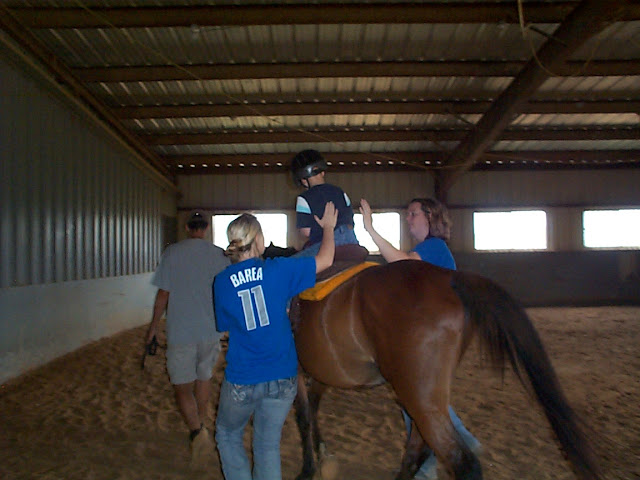Researchers Find Working With
Horses Increases Emotional Intelligence in Humans
Source: University of Kentucky
“When nurses
and doctors benefit from collaborating with horses then ultimately their
patients also benefit.”
Researchers in
the University of Kentucky College of Agriculture
recently completed one of the first studies to explore how working with horses
can develop emotional intelligence in humans. UK Center for Leadership
Development researchers, Patricia Dyk and Lissa Pohl, collaborated with UK
HealthCare nurse researchers, Carol Noriega, Janine Lindgreen and Robyn Cheung
on the two-year study, titled “The Effectiveness of Equine Guided Leadership
Education to Develop Emotional Intelligence
in Expert Nurses.”
“With Lexington
being known as the Horse
Capital of the World, it is only fitting that the University of
Kentucky is conducting pioneering research in the emerging field of equine
assisted learning,” said Patricia Dyk, director of the Center for Leadership
Development.
The project
included a control group of 10 nurses from the Neuroscience Surgery Service
Line and an intervention group consisting of 11 nurses from the Trauma and
Acute Care Surgical Service Line at UK Chandler Hospital. At the start of the
study and again six months later, both groups took the online assessment
appraising emotional intelligence. Nurses in the intervention group
participated in a one-day workshop that involved experiential learning with
horses.
“Each exercise
in the workshop was designed to develop the four emotional intelligence
competency areas of self-awareness, self-management, social awareness and
relationship management,” said Lissa Pohl, research project manager and
workshop facilitator.
Nurses from the
intervention group filled out qualitative surveys immediately after their
experience with the horses and again three months after the workshop.
The before and
after survey results showed there was an increase in the scores of the
intervention group in all four competency areas when compared to the control
group. The researchers admitted, though, that the small number of participants
in the study makes it difficult to conclude that working with the horses was
the cause of the intervention group’s increase.
Marie-Claude
Stockl was the co-facilitator for the workshop with the nurses. She owns the
Horse Institute, and as such, facilitates equine-assisted learning workshops
for corporate groups in central New York state.
“We are
thrilled to get this research completed, because it builds the credibility of
all organizations offering this type of learning experience,” she said.
According to
Pohl, the initial results are encouraging and they lay the groundwork for
subsequent studies of larger and more diverse populations of nurses.
“If horses can
increase our ability to understand ourselves and others better, then the
healthcare industry is a perfect place for studies like these,” she said. “When
nurses and doctors benefit from collaborating with horses then ultimately their
patients also benefit.”























